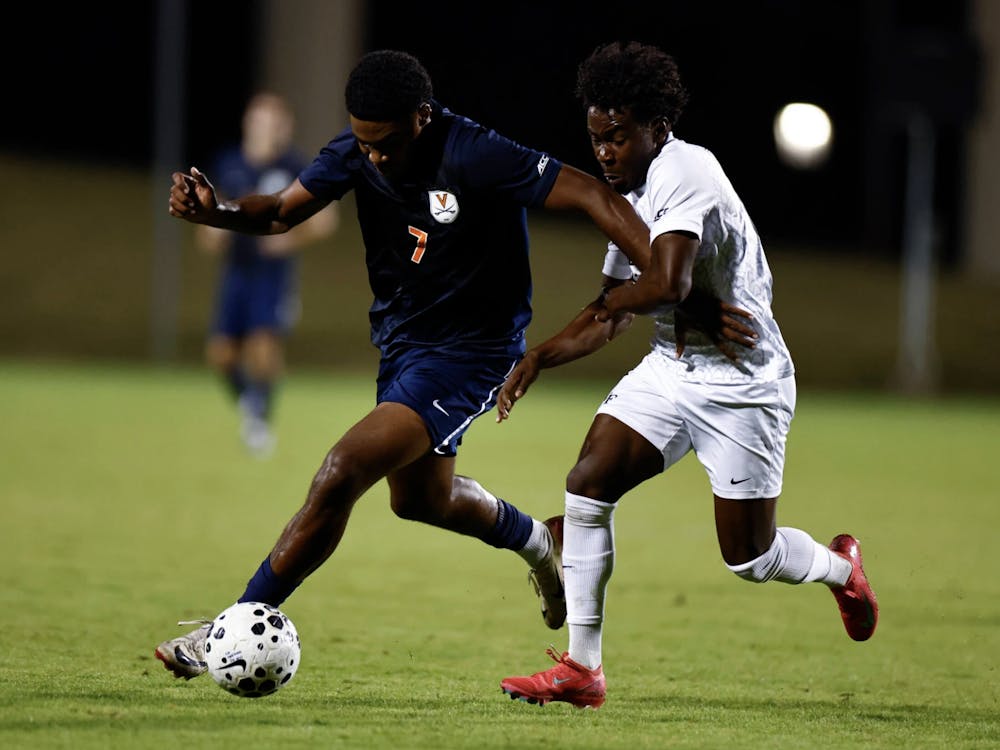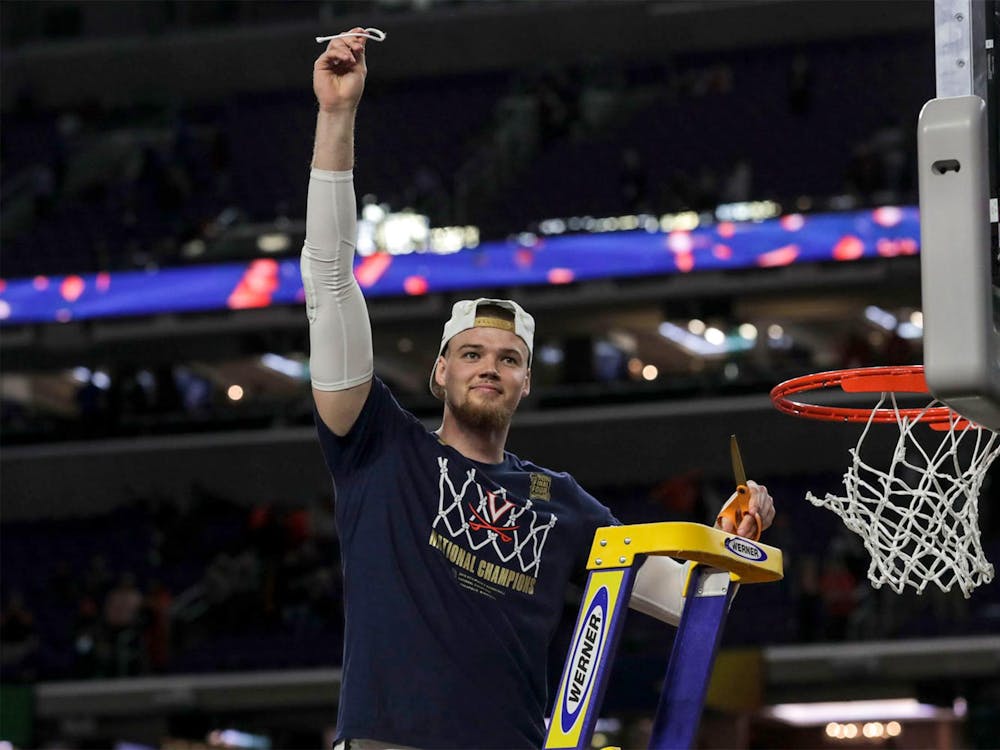The first half of the Virginia men’s basketball team’s 84-78 loss against Maryland last night was absolutely abominable from the perspective of a Wahoo — a 45-30 halftime score is too deep a hole to climb out of on the road, and it’s why the Cavs lost the game. But let’s attack that atrocity in a minute.
Because in the second half, two things happened that almost got the Cavs an unlikely “W.” First, and most importantly, Virginia, on a decidedly rare occasion, played D — at least for a while. After allowing the Terps, the worst-shooting team in the ACC at 41.7 percent coming into last night’s game, a 58.6 percent shooting in the first half — among other shameful defensive statistics, which, again, we’ll tackle later — the Cavs held the Terps to 3-of-11 to start the second as they cut the deficit to 3. Much of the renewed effort was courtesy of seldom-used junior guard Solomon Tat, who coach Dave Leitao had used in years past as a defensive specialist. With Virginia’s defense gasping for air, Leitao went to Tat at the 18:25 mark of the second half to D-up Maryland senior stud Greivis Vasquez, and Vasquez was held to a lone free throw through the 12:29 mark when Tat was subbed out.
“What Vasquez [does] best is get into the middle and try to help his teammates,” Tat said. “My own job is to just shut him down, and that’s what I did.”
Factor two of the comeback: Mike Scott. Though Leitao insisted that feeding Scott in the post was not a point of emphasis at halftime — rather, he said, it was getting the ball below 15 feet in general, as has been a coaching point all season — the Cavs appeared as patient as they have ever been in allowing Scott to get position on the block and getting him the rock. And so, after a first half with no field goal attempts, Scott sank 3-of-8 in the second half and knocked in 10-of-10 free throws.
I don’t want to pump my ego; I have been wrong before (at least once), and I am far from the only reporter to suggest that Scott should have played a more prominent offensive role in games past. But at halftime, I turned to a fellow reporter and told him that if the Cavs can’t get the ball to Scott against one of the worst frontcourts in the conference, they won’t against anyone.
And so, the Cavs marched back. Had Virginia had some energy left for the stretch run, in which Maryland scored on 13 of its final 15 possessions, they just might have pulled it out.
“If we were down 5 or 6 points at halftime and did what we did, the mindset of the game, not just the execution, those last five, six or seven minutes probably would have been a little different,” Leitao said.
Now, as advertised, back to the culprit: the first half. Simply put, the quest for the Cavaliers to play defense with any degree of consistency continues.
Following Virginia’s loss to Bradley last season in the CBI semifinals, which capped a season full of lamentable defensive efforts, Leitao told reporters that this year’s team, if nothing else, would play defense. Lock-down defense leads to fruitful offense, he repeated. The 2006-07 team was too focused on out-shooting its opponents, players insisted.
But, as last night’s opening half indicated, the woes are far from over. In the first half, Leitao tried everything. He started man-to-man, but the Cavs’ feet looked like they were in bags of sand — whether keeping players in front or rotating in help. When that failed, Leitao offered a 3-2 zone, which is a new wrinkle this season — not a bad thought against a Terrapin team without much of a post threat. Here again, holes emerged, and then it started raining threes at Maryland’s end of the floor — 4-of-7 at the half, to be exact.
Perhaps most embarrassing, however, was Virginia’s transition defense in the opening period; the Cavs were out-scored 16-0 on the fast break at halftime. In the transition game, failing to stop the ball and failing to protect the hole are the two cardinal sins; Virginia committed both.
“I think it’s just communication issues,” junior guard Calvin Baker said. “You can’t just stay with your man — you’ve gotta find the open man.”
Moreover, as Leitao reads Virginia’s defensive statistics compared to the rest of the conference — both last night and all season — the furrow in his brow must nearly reach his eyelids. Scoring defense — last. Field goal percentage defense — last. Three-point field goal percentage defense — 11th. Turnovers forced — 11th. Even rebounding margin, which has generally been a strength under Leitao, and which should continue to be a forte with the addition of 7-foot freshman Assane Sene — the Cavs sit at just eighth.
Cavalier fans can all be sympathetic to some offensive mishaps. Even Leitao admitted that his team would be prone to some dry spells. When a freshman, Sylven Landesberg, is your go-to scorer and your returning high scorer from the year before, senior Mamadi Diane, is in the worst shooting slump of his life, some sloppy possessions are to be expected.
And sure, the same can be said for a young team at the defensive end — but to a significantly lesser degree. Does on-the-ball defense become a greater challenge and help defense become much more precise? Absolutely. In addition, it doesn’t help when you are turning the ball over, as Virginia did 13 times in the first half last night. But, as any basketball mind will tell you, defense is about effort as much as anything else. When you’re getting beat in transition and your feet are glued to the floor, inexperience is not to blame.
“I think we weren’t playing with a sense of urgency in the first half,” Baker said. “In the second half, we felt like we had to defend just to come back.”
I still have faith that, in time, Leitao and the fellas will buckle down on the defensive end. But when the mantra at the end of one season moving into the next is, “We will play D,” and the Cavs continue to say, “Ole!” as opposing offenses charge through Virginia’s red-cape defense, something has certainly gone awry.






